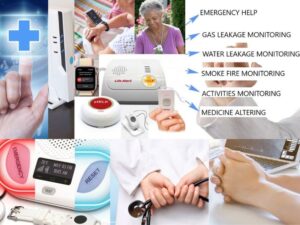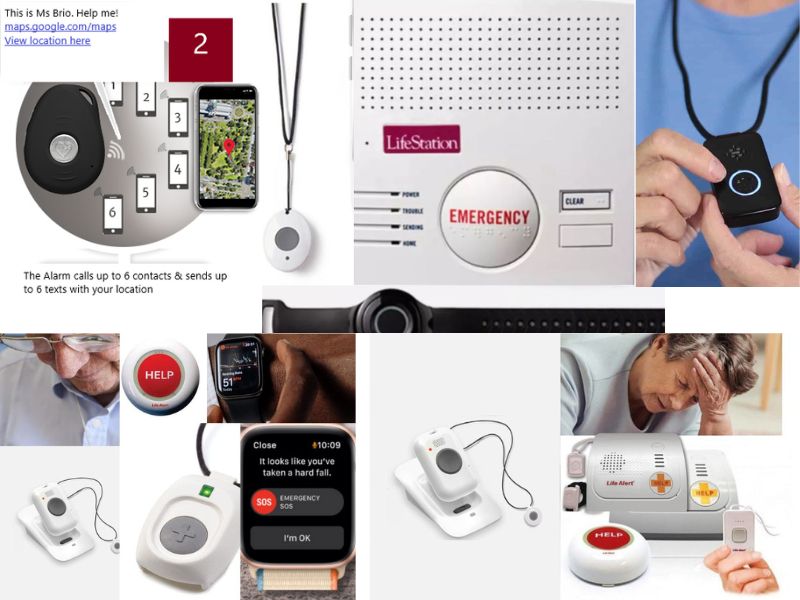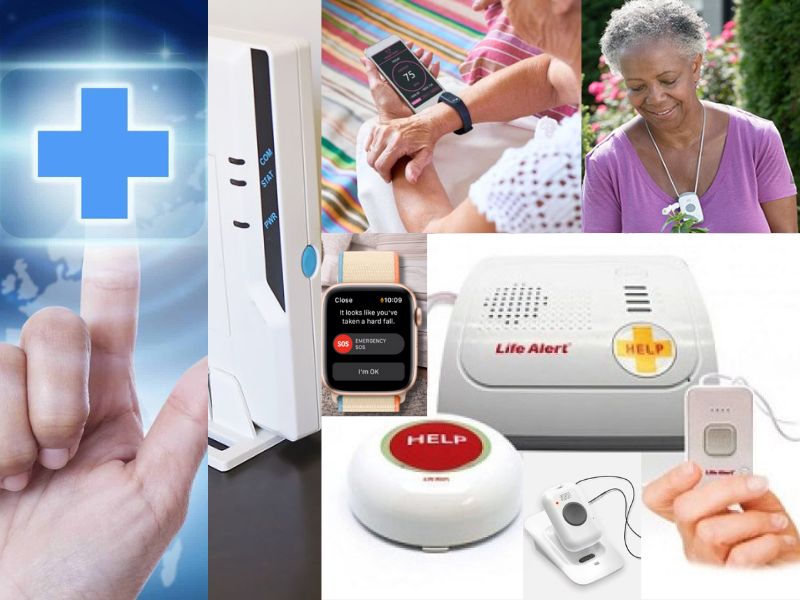Are Medical Alert Devices Covered by Insurance?
Medical alert devices may be covered by insurance in some cases, but it depends on the specific insurance plan and policy.
Some Medicare Advantage plans may cover the cost of a medical alert device as a preventative service or as durable medical equipment. Medicaid may also cover the cost of medical alert devices for eligible individuals. Additionally, some private health insurance plans may offer coverage for medical alert devices, but it depends on the specific plan and policy.
It is important to check with your insurance provider to determine if they offer coverage for medical alert devices and what specific coverage options are available to you. You may also want to contact the medical alert device provider to see if they accept your insurance and what coverage options may be available.

As we age, our health concerns increase, and so do the associated costs. It’s always frightening to think about falling ill without any support to lean on for help. Well, that’s where medical alert devices can come in handy!
These trusted pieces of technology are designed to give you or your loved one peace of mind by providing a quick response in case of an emergency – whether it be a fall from which you cannot get up safely or even something as simple as finding yourself needing assistance getting out of bed – they offer instant help.
But before investing in such an important tool, it is natural to ask: Are medical alerts covered under insurance? Let’s look into this question and cover the basics of how coverage works & what different types of plans may offer.
What are Medical Alert Devices?
Medical alert devices are designed to provide peace of mind for those living alone or with a medical condition requiring close monitoring. They are especially useful for elderly individuals who may need assistance quickly in case of a fall or other emergency. The devices are usually worn as pendants or wristbands and can be easily activated by pressing a button.
When the emergency button is pressed, it sends a signal to the monitoring center, staffed by trained professionals who can respond to the emergency. The monitoring center can then speak to the individual through the device to assess the situation and provide the appropriate help, whether calling emergency services or contacting a designated family member or caregiver.
Advanced medical alert devices, such as those with fall detection technology, can detect falls automatically and send an alert to the monitoring center even if the individual cannot press the emergency button. These devices use sensors and algorithms to detect falls and provide quick and efficient assistance in an emergency.
Types of Medical Alert Devices:
Several medical alert devices are available, including pendants, wristbands, mobile devices, and fall detection devices.

- Pendants: These are the most common type of medical alert device. They can be worn around the neck, attached to a waistband, or kept in a pocket or purse. Pendants are small, lightweight, and easy to use, making them a convenient option for those who need quick access to emergency assistance.
- Wristbands: Wristbands are similar to pendants but are worn on the wrist. They are also equipped with an emergency button that can be pressed to send a signal to the monitoring center. Wristbands are a good option for those who prefer to wear a device on their wrist or those with mobility issues and may not reach a pendant around their neck.
- Mobile Devices: Mobile devices can be carried in a pocket or purse. They are equipped with a GPS tracking system, which allows the monitoring center to locate the individual in an emergency. Mobile devices are ideal for those who are frequently on the go and need quick access to emergency assistance.
- Fall Detection Devices: Fall detection devices are equipped with sensors that detect falls and automatically call for help. These devices use advanced algorithms to detect falls and provide quick and efficient assistance in an emergency, even if the individual cannot press the emergency button. Fall detection devices are ideal for those at high risk for falls, such as elderly individuals or those with mobility issues.
When Do You Need a Medical Alert System?
Whether or not you need a medical alert system depends on your needs and circumstances. Here are some factors to consider:
- Living Alone: If you live alone, a medical alert system can provide peace of mind and quick assistance in an emergency.
- Health Conditions: If you have a medical condition requiring close monitoring, a medical alert system can help ensure you receive the necessary help in an emergency.
- Mobility Issues: If you have mobility issues or are at risk for falls, a medical alert system with fall detection technology can provide quick assistance in an emergency.
- Age: Older adults are more likely to need a medical alert system, especially if they live alone or have health conditions that require close monitoring.
- Lifestyle: If you are frequently on the go and do not have someone with you at all times, a mobile medical alert device can provide peace of mind and quick assistance in an emergency.
Understanding Insurance Coverage for Medical Alert Devices:
Insurance coverage is a critical factor to consider when purchasing a medical alert device. Insurance companies may provide coverage for these devices, depending on the type of insurance policy and the individual’s specific needs. Several types of insurance may cover medical alert devices, including Medicare, Medicaid, and private insurance.
Medicare Coverage for Medical Alert Devices
Medicare is a federal health insurance program for people who are 65 years or older, as well as some people with disabilities. Medicare covers some medical alert devices, but coverage is limited. Medicare will cover medical alert devices if they are deemed medically necessary and the individual meets certain criteria.
Medicaid Coverage for Medical Alert Devices
Medicaid is a joint federal-state program that provides health coverage to low-income individuals and families. Medicaid coverage for medical alert devices varies from state to state and depends on the individual’s specific needs and circumstances. Medicaid may cover medical alert devices if they are deemed medically necessary and the individual meets certain eligibility criteria.
Private Insurance Coverage for Medical Alert Devices
Private insurance is a health insurance policy purchased by an individual or employer. Private insurance coverage for medical alert devices varies depending on the insurance company and the specific policy. Some private insurance companies may cover medical alert devices, while others may not.

Conclusion
In conclusion, it is important to understand insurance coverage for medical alert devices before purchasing one. Medicare, Medicaid, and private insurance may cover medical alert devices, but coverage is limited and depends on the individual’s specific needs and circumstances. It is essential to check with your insurance provider to determine if medical alert devices are covered and, if so, what the coverage terms and conditions are.
By understanding insurance coverage for medical alert devices, individuals can make informed decisions about purchasing these life-saving tools.
